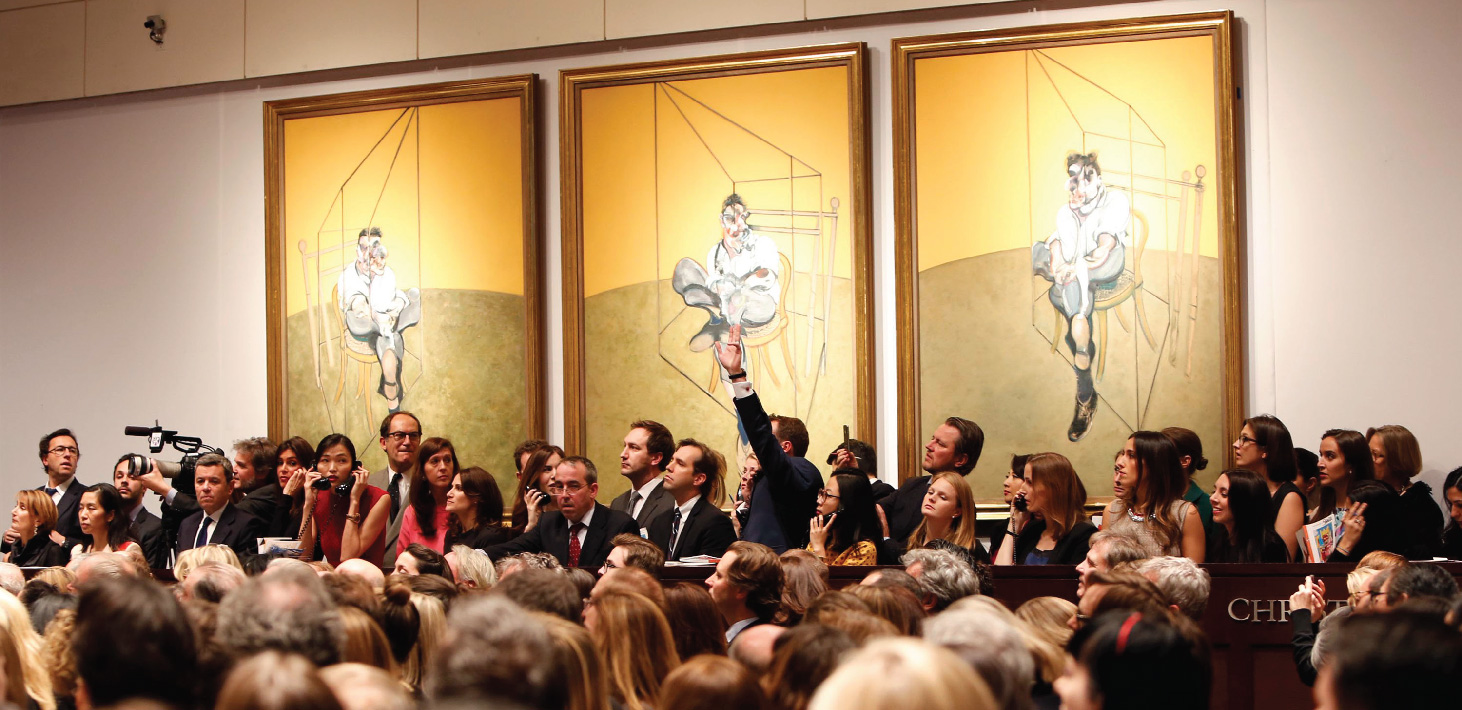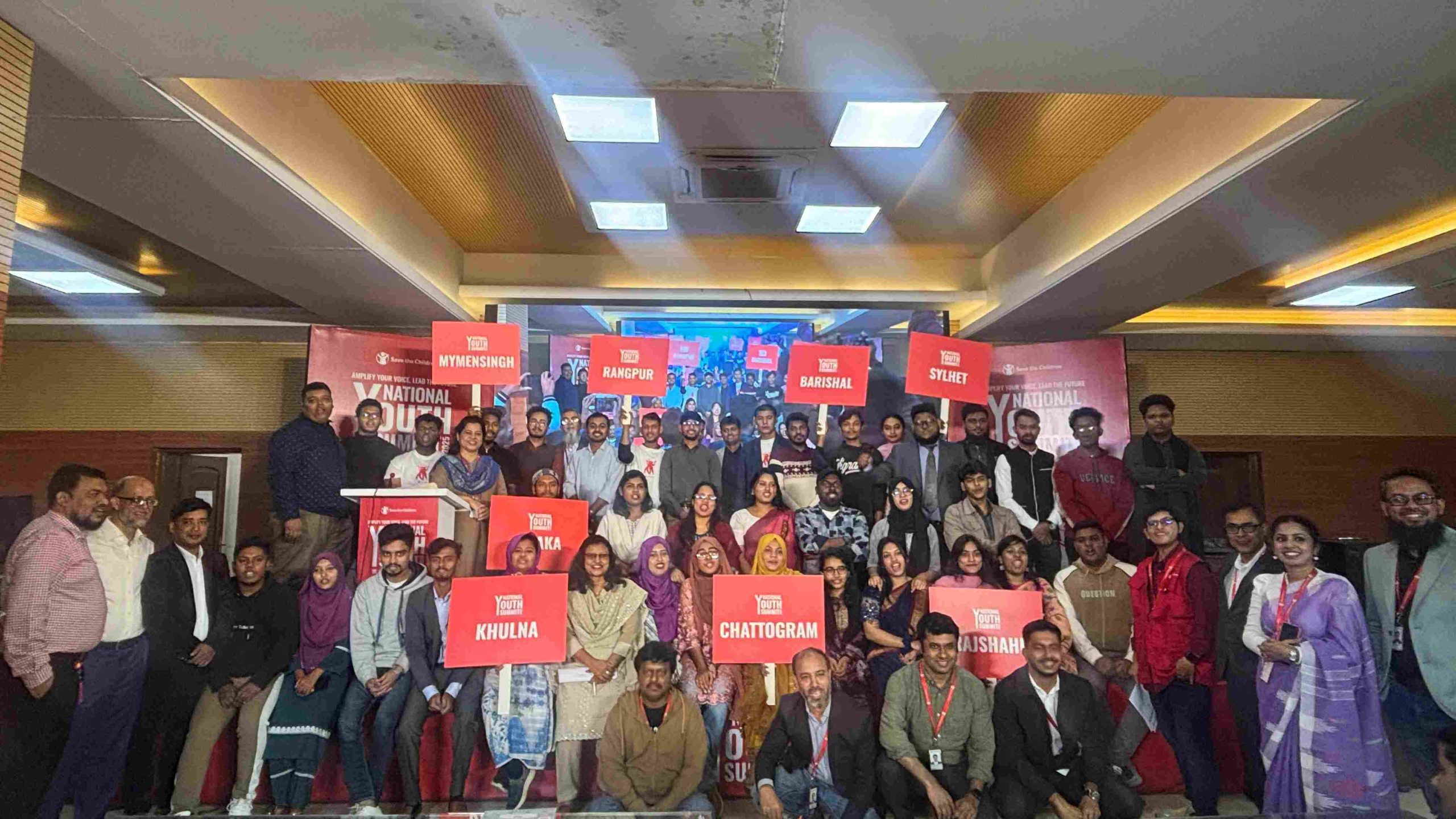Taking the Bangladeshi art market to its next step
By Hadrien Diez and Sadia Rahman
By all accounts, the Bangladeshi art scene is booming. The country had its first pavilion at the prestigious Venice biennial for international contemporary art in 2011 and the Dhaka Art Summit, the first international art summit to take place in Bangladesh, was held that same year. In the last decade, galleries have blossomed in the capital – there are more than ten today. The city’s first private, not-for-profit arts venue opened its doors in May, a sure sign of the local art scene’s growing depth and amplitude. A firm foundation has been established for a robust, healthy and sustainable art market in Bangladesh it seems. This, in turn should provide a platform for the presentation of another facet of the richness of Bangladesh in international arena and trigger multiple opportunities to market the country abroad.
The time is ripe to build further on this foundation. Establishing clear processes in the business of art, expanding the base of buyers and providing artists with more opportunities – both locally and internationally – are pressing issues. But the three main actors of the art market (galleries and cultural foundations, buyers and collectors, and of course artists) will need to work in harmony to effectively tackle these challenges. The greater the synergy between them, the more successfully the market will develop.
Rationalizing practices
On paper, the role of galleries and cultural foundations is simple. They typically put a venue at disposal for the display of arts exhibitions, and – to varying degrees – support the creation of art works, commission documentation about artists and their oeuvre and work hard to interest private and institutional buyers in the works of the artists being represented. The art enthusiast (or investor) can glean the trends and currents underlying the arts sector by following which artists and artworks these institutions choose to show. Furthermore, galleries and cultural foundations play pivotal roles in understanding and demonstrating the quality and authenticity of an artwork – see our box on the side of this article.
While the arts sector has developed rapidly in the last two decades, the future value of collections and investments in Bangladeshi art will largely be defined by the capacity of artists, galleries and dealerships to set and adhere to clear business practices. The pricing of artworks, for example, is one element that would benefit from a more systematic approach. In the market of Dhaka, artworks are often priced following the trend of the moment. So much so that it is not rare to see large differences in price for similar works by the same artist at different venues within the time-span of only a few months. In order for a stable market dynamic to develop, artists and galleries must look to reduce these incoherencies.
Although there are few dedicated art collectors in Bangladesh, their commitment makes-up for their small numbers – they are the lifeblood of the arts industry. The investments that collectors and buyers make in works of art are essential, as it both to provide artists with continued opportunities to create and allow arts institutions (like galleries) to work on a long-term perspective. Expanding the base of committed buyers and collectors is thus a key priority for the arts sector in this country. No doubt that creating an awareness and understanding of the arts in the expanding urban and rural middle-classes will be part of the solution.
The number of artists and the general variety of the artwork created has boomed in recent years. This in itself gives a clear indication of the strength of the fundamentals of the market. An important pillar to the structure of the Bangladeshi art market is the positioning of art and artists of the country in global conversations about art. Successes have led to the inclusion of works by Bangladeshi artists to the collection of such prestigious arts institutions as the British Museum and the Guggenheim Museum in New York, for example. Still, much remains to be done to fully include Bangladeshi art on the international map. A solution might come from the exclusive engagement of artists with a gallery for a certain period of time – three to five years, say. While this practice is commonplace internationally, it is yet to take root in Bangladesh and remains a stumbling-block to the development of a culture in which galleries, or dealers feel confident to make repeated large investments in building the international profile of an artist. This is a long and involved enterprise which can only be undertaken if there is a reasonable prospect of return on the longer term – it is arguable that exclusivity is an essential security for the investment. The arts market is very intricate. Sustained collaboration between all of its components is the healthiest way for substantial expansion to be achieved.
Building on firm ground
If setting consistent business practice will take time, it will certainly be worth the pain. When galleries are serious about whom they select, collectors can direct their money towards artists unknown to them with more confidence. A clear cataloguing process alleviates the risk of copies and forgeries – an field where artists also have a role to play. A “virtuous circle” will be created, which fosters confidence and brings growth in both the quality of the works produced and in the trajectory of their long-term value.
Art has many advantages for responsible investors who maintain diversified portfolios. It is not heavily taxed, it is easily transported, it can be readily resold and, most interestingly, it tends to grow in value overtime. But, as for every market, the risk of overheating needs to be mitigated. Without certain checks and balances, the art market can be exposed to the danger of forming a “bubble” as we saw in Japan (in the 1990s) and much more recently in neighbour, India. When the demand for art suddenly surges, a logical temptation for galleries and artists is to respond with a greater offer. Art is not an industry though, its fabrication process involves reflection and emotion. Time is an essential component of its quality. Taking shortcuts by producing more art to sell it at bigger prices is a miscalculation: from observing the experiences of other countries, we know that the bubble created will last for only a short time. Further, history also shows that the shock-waves generated when the bubble bursts have a severe impact on investors.
What lesson can Bangladeshi artists, galleries and collectors learn from this? Primarily, that a vivid and transparent market for art (ideally, including a secondary market) is necessary to create buyer confidence in the real value of works presented for sale. Trends come and go, artist who are fashionable today may not always remain so, but the intrinsic qualities of master-works become clearer with the passage of time. In this sense, a secondary market would act as a buffer against price bubbles. The appearance of art auctions, or of galleries trading in pre-owned art should thus be welcomed as sign of a more mature and secure art market.
For all the importance of the investment value of art, personal connection should remain at the forefront of buyers’ and collectors’ minds while assessing work. Buying art is complex act, unique in offering the luxurious combination of being both an aesthetic statement and a financial investment. After all, the market-value of any artwork is largely defined by the importance attributed to it by society. A survey of successful investors and trend-setters in art will show that they select an artwork based on a sophisticated understanding of their own tastes – not simply by reaching for established names or reassuring (conventional) pieces. Only then does can one feel confident that, whatever the purchase price of the work, its cultural value will stand the test of time.
How to buy art.
Finding art is relatively simple in Bangladesh. The three main avenues through which one can buy art are:
◦ The artist’s studio
◦ Art dealerships, which generally present a varied selection of works by many different artists at the same time – sometimes, second hand. Dealerships will rarely be able to provide detailed information on the artist’s journey, or help you to understand where the work you like fits into the larger context of the arts.
◦ Art galleries show artworks in the form of exhibitions: they display works by artists for a short period of time. Galleries have long-term relationships with artists and exhibitions are prepared collaboratively over long periods of time. Galleries also document their exhibitions (catalogues, books…) to help buyers to understand the value of the art on show.
Trying to have direct contact with the artist is, of course recommended. If it is not possible, opt for serious intermediaries who have built a reputation for reliability.
Buying art is an act of pleasure, and is often a matter of love at first sight. One decides to buy an artwork when overwhelmed by its aesthetic, cultural or emotional value. But before succumbing, there are important questions that one should keep in mind.
- The material quality of the artwork – i.e. how well it is fabricated – has a strong impact on how the work will physically stand the tests of time. A bronze sculpture will be more easily preserved than a drawing on newsprint paper. For paintings, prospective investors should inquire about the canvas, the paint and the frame, as well as asking what materials and processes were used in preparing these three elements. Something to consider with framing is whether the artwork is directly pressed against the glass or if there is a mount in between. Having a space between a painting and the glass of a frame generally diminishes the impact of humidity – which is very important in a tropical climate.
- The aesthetic valueof the work. Of course there is no clear guide to “the beauty” of a work of art – buying art would then become very boring! But there are a few parameters that can give an indication of the aesthetic value of an artwork. Originality is very important: does the artwork express the artist’s personal style, or does it echo another famous work? Beware, you may be attracted to a piece because it reminds you of an iconic artwork. Then the care which the artist put into his piece is often visible: are there any signs of spilling, any trace of defect? An artwork should be carefully crafted and the craftsmanship is a defining element of its final quality.
- The authenticity. Counterfeiting is a genuine problem, and the reliability of the source of purchase is the key to avoiding bad surprises. Having direct contact with the artist is the obvious way to be sure about the authenticity of the artwork you selected. Reputable, experienced intermediaries can also help you to mitigate the risk of buying counterfeit art. For galleries it is standard practice to authenticate the artworks they show, with authenticity certificates signed by both the artist (if he is alive) for instance. Never hesitate to request this certificate; it will be an important document if you re-sell your artwork.
- The number of editions: prints, typically, but also photography and even video-works are all produced in certain quantities of limited editions which are then sold. On the top of that, a certain number of so-called “artist’s proofs” (which are initially released for the artist’s use only, but which often find their way to the market after some time) are also produced from the same work. A buyer should thus be aware of the number of editions and artist’s proofs of the works he likes. The more editions there are of a work, the less the value of each one.
How to collect art
Roman Emperors filled their villas with sculptures, Catholic Popes had their churches covered with masterworks and Mughal dignitaries indulged in exquisite miniatures. Collecting art is a passion that transcends cultures and geographical boundaries; the practice is probably as old as art itself. Different reasons push people to collect art. The most popular today are probably the prestige that is associated with art and the niche it offers to diversify one’s financial portfolio.
If money is a factor that should be considered when collecting art, it is certainly not the only one. Passion is the key. Dorothy and Herbert Vogel, the so-called “proletarian art collectors”, are a famous example of what is possible when genuine interest and true dedication towards art are the main drive. This couple amassed one of the most important collections of US minimalist and conceptual art on their meager salaries of librarian and postal clerk. Their secret? Weekly – sometimes daily – visits to galleries, art events and artists studios; and a firm knowledge of their own tastes. The Vogels owned works by such important artists as Christo, So LeWitt or Cindy Sherman, which they had spotted before almost everyone – and which they could never have afforded when the artists became famous.
A collection of art is in itself artwork. If it is genuinely assembled, it will reflect its collector’s tastes and indirectly reflect his, or her innermost feelings. Here are a few tips on how to collect art:
- Buy only art you like. It might seem obvious, but people often buy an artwork because the artist is famous or because they think of it as a good investment. Investing in art without considering its emotional value places a buyer at risk: the value of his purchase is determined by the tastes of others.
- A collection should be coherent – especially when running on a fixed budget. Private collectors are no museums, they should not try to own every style, every period or every artist. If the value of a collection is to be more than the sum of its part, it should be consistent in the artists, the themes or the styles it comprises.
- Quality rather than quantity. A few very beautiful pieces by talented artists will always have more value once put together than hundreds of mediocre ones. Again, collectors should trust their emotions and never buy an artwork just because they think it is affordable.
- A collection is not only about buying art. Investing in a display of quality will add to the cultural value of a significant purchase. When displaying work privately, positioning and lighting are very important. And when lending to a gallery, or a museum for an exhibition, understanding how your work will be presented, cared for and returned are paramount. Finally, having an appropriate budget dedicated to conservation of the collection is essential. Security and control of humidity and dust are areas of particular concern. With proper attention, your carefully selected artworks will bear the test of time.















